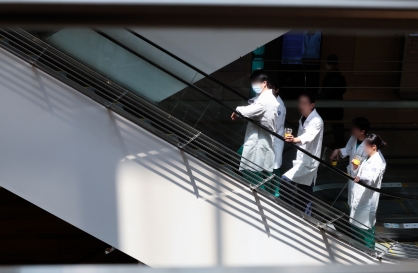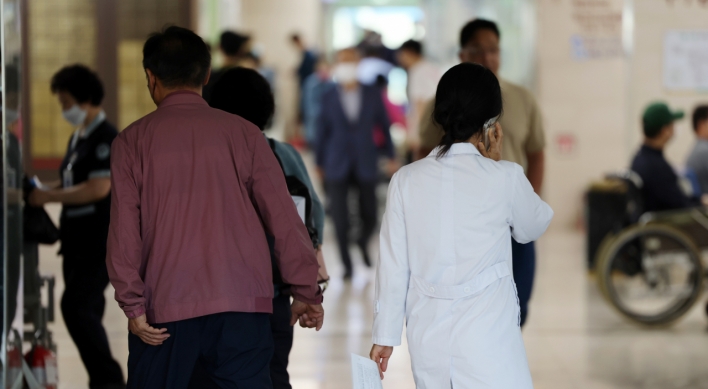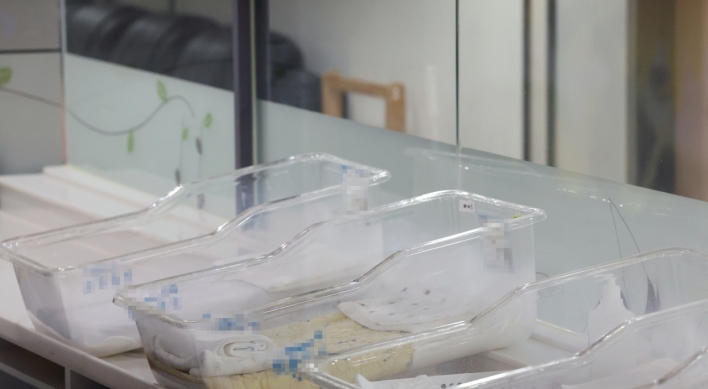Cases of congenital anomalies have been increasing among newborns, with defects in the urinary system showing a marked rise, study results by a team that has been tracking the issue indicated Monday.
Out of 100 babies born, 5.5 were found to have birth defects, according to the research team at Inha University's College of Medicine. The team studied 403,250 babies born in 2009-2010 in seven major cities, based on health insurance applications. The findings were published in the newest edition of the journal BMC Pregnancy and Childbirth.
Statistics provided in the study showed birth defects during the measured period, 548.3 per 10,000, or 5.5 per 100, was an increase from 3.7 per 100 in the years 1993-1994. In the latest study, the ratio of anomalies was higher among boys than girls, 306.8 per 10,000 compared with 241.5 per 10,000.
The most common abnormalities were found in the circulatory system, 180.8 per 10,000, followed by urinary organs (130.1) and musculoskeletal functions (105.7), according to the study. The number of cases of urinary system anomalies, which was 0.7 per 10,000 in 1993-1994 period, jumped to 9.9 in the 2009-2010 period.
Heart defects from a hole in the heart, known as atrial septal defect; cystic kidney disease; and dislocated hip joints also showed an increase over the measured periods. Other defects have decreased, notably anencephaly, or an absence of a major portion of the brain and skull, that fell from 3.4 per 10,000 to 0.05, and problems in the pulmonary valve, which decreased from 23.1 to 8.2.
The research team did not provide conclusions on the causes of these congenital defects but conjectured that those related to the circulatory system could be from technological advances in detecting the problems at the birth stage and from environmental pollution. Hormonal imbalances in mothers from environmental hormones and other external factors were cited as possible reasons for abnormalities in the urethral and reproductive systems.
"The rate of some of the birth defects in the country is very high, and we direly need to make efforts to prevent them," professor Lim Jong-han, who led the study, said of the results. "We should take research experience in other countries as reference and hurry with studies on finding the effects of pollution, environmental hormones and other factors on birth defects." (Yonhap)
Out of 100 babies born, 5.5 were found to have birth defects, according to the research team at Inha University's College of Medicine. The team studied 403,250 babies born in 2009-2010 in seven major cities, based on health insurance applications. The findings were published in the newest edition of the journal BMC Pregnancy and Childbirth.
Statistics provided in the study showed birth defects during the measured period, 548.3 per 10,000, or 5.5 per 100, was an increase from 3.7 per 100 in the years 1993-1994. In the latest study, the ratio of anomalies was higher among boys than girls, 306.8 per 10,000 compared with 241.5 per 10,000.
The most common abnormalities were found in the circulatory system, 180.8 per 10,000, followed by urinary organs (130.1) and musculoskeletal functions (105.7), according to the study. The number of cases of urinary system anomalies, which was 0.7 per 10,000 in 1993-1994 period, jumped to 9.9 in the 2009-2010 period.
Heart defects from a hole in the heart, known as atrial septal defect; cystic kidney disease; and dislocated hip joints also showed an increase over the measured periods. Other defects have decreased, notably anencephaly, or an absence of a major portion of the brain and skull, that fell from 3.4 per 10,000 to 0.05, and problems in the pulmonary valve, which decreased from 23.1 to 8.2.
The research team did not provide conclusions on the causes of these congenital defects but conjectured that those related to the circulatory system could be from technological advances in detecting the problems at the birth stage and from environmental pollution. Hormonal imbalances in mothers from environmental hormones and other external factors were cited as possible reasons for abnormalities in the urethral and reproductive systems.
"The rate of some of the birth defects in the country is very high, and we direly need to make efforts to prevent them," professor Lim Jong-han, who led the study, said of the results. "We should take research experience in other countries as reference and hurry with studies on finding the effects of pollution, environmental hormones and other factors on birth defects." (Yonhap)




![[Weekender] Korean psyche untangled: Musok](http://res.heraldm.com/phpwas/restmb_idxmake.php?idx=644&simg=/content/image/2024/05/02/20240502050841_0.jpg&u=)



![[Eye Interview] 'If you live to 100, you might as well be happy,' says 88-year-old bestselling essayist](http://res.heraldm.com/phpwas/restmb_idxmake.php?idx=644&simg=/content/image/2024/05/03/20240503050674_0.jpg&u=)








![[Herald Interview] Director of 'Goodbye Earth' aimed to ask how we would face apocalypse](http://res.heraldm.com/phpwas/restmb_idxmake.php?idx=652&simg=/content/image/2024/05/03/20240503050732_0.jpg&u=)
